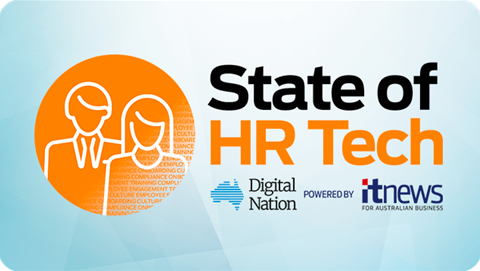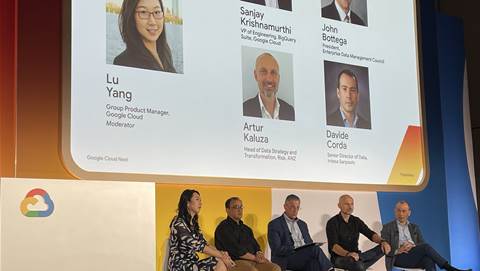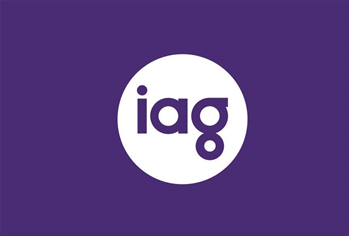Ask Vodafone Hutchison Australia’s general manager of technology strategy Easwaren Siva about digital and one thing is clear: VHA is already deeply digital.

VHA accelerates digital transformation
It’s put years into digitising its workplace, network and customer experience, and that investment is ongoing.
But as long-running as VHA’s digital initiatives and focus may be, Siva keeps coming back to the idea that what’s been achieved to date are “baby steps” toward a much larger, more futuristic goal. That goal, he says, varies by function.
In the workplace, for example, staff are being equipped with the tools and skills for digital enablement.
“Everything is effectively connected: HR systems, payroll systems, financial systems, contract management systems, project management systems. There is a system for almost all workflow activity and process,” Siva says.
“One of the more recent introductions has been the implementation of Facebook for Workplace. It has actually changed how the leadership communicates with employees and how employees collaborate and communicate with each other and share information. Office 365 and associated collaborative tools are progressively being adopted.”
In the network, the goal is to autoscale based on customer demand, and to self-heal against issues - effectively creating an autonomous and predictive network.
“The interest we have is how we progressively move to what I would call an ‘end state’ or ‘a ‘nirvana’ position’, where we would effectively be a ‘self-operating’ environment, so that if faults occur in the network, the network is able to ‘self-heal’,” Siva explains.
In the customer-facing domain, the long-term goal is to enable a frictionless experience across all channels.
Your call

“At a macro level, we would we would like to see the MyVodafone app being the first point of call, completing as much as possible on the app,” Siva says.
“There will be cases where there may be an interaction with either a call centre or a further interaction with someone in-store.
“We still see multichannel as the environment that we’ll operate in, and hence we are continuing to work through journeys that are multichannel to ensure they are also frictionless.”
When it comes to improving customer-focused experiences at VHA, a cross-functional team called Digital First is driving much of the digital transformation effort.
The team’s makeup is drawn from an understanding of what goes into making a great customer experience in telco.
“A customer does not interact with our services by way of function - they interact by way of what they need,” says Siva.
“A customer needs great service i.e. they've got a question, they're trying to make a change, they have an issue, they want to upgrade, they want to change their plan, they want to change some features, or they want to buy more services. That impacts the service, sales and product teams.
“What we've been learning is for a customer to engage with us digitally and in a frictionless way, it requires absolute collaboration between organisational functions - technology, service and product.
“The products need to be simple, for the service needs to be frictionless, and the technology needs to be there to support it.”
VHA’s Digital First team is “ploughing through a multi-year program” of work and its role is expected to be ongoing.
“It's not a set-and-forget situation,” Siva says. “It's a multi-year, continuous improvement of what we have today. We've got a roadmap for further improvement.”
Digital-first, not digital-only

This concept is well understood elsewhere in the sector.
Telstra is a year in its own large-scale transformation and simplification project, known as T22.
“Like all big incumbent organisations we need to move faster to meet customer expectations and market demands,” Telstra’s digital channel executive Jenni Barnett says.
“This is what the T22 strategy will help unlock – both through technology and removing friction for customers. We are looking at front-end customer experiences as part of our T22 transformation program, as well as how we speed things up for customers by digitising back-end systems with the use of capabilities such as robotics.
“This will make a step change in how we service customers.”
While Telstra is designing digital-first and mobile-first experiences, they are “not digital-only”, Barnett notes.
“This is because customers move across channels, and as they do, if they need extra help, we want to be able to help them in the moment. For example, some customers may need extra help so we design for digital and how to transfer well to a chat agent if needed,” she says, adding that Telstra calls these kinds of customer experiences “digital assisted.”
Digital works are completed using cross-functional teams with resources drawn from Telstra’s digital and IT teams.
Optus’ CX School

As iTnews Digital Nation shows, there are myriad digital enablement programs underway to equip people with digital skills and competencies that they can then take back into their own business areas.
Optus is using an enablement program called CX Academy to drive digital improvements into customer-facing parts of its business.
Optus vice president of digital consumer Vaughan Paul says CX Academy builds on a CX capability program that has been running for the past decade.
“CX Academy is part of a wider organisational strategy to build and evolve CX capabilities and competencies, to focus on the customer,” Paul says.
“At Optus exceptional digital experience is a key priority at every touchpoint for our customers and this solution is one of many we’re working on to drive further customer satisfaction.
“We are working to inspire and empower every employee to take ownership and consistently improve upon our customers’ experience.”
Through CX Academy, Optus employees are given an opportunity to develop and evolve skills used by CX practitioners - such as lean process improvement, customer journey mapping and human-centred design - via a series of “bite-sized masterclasses”.
Despite being relatively new, it is already seeing strong initial use. “Since the April 2019 launch of CX Academy, we have trained over 250 employees nationally across a range of CX disciplines.”
Push and pull

While much of the focus in digital experience tends to be on the front-end, other work aims to improve behind-the-scenes processes, which streamline the way customers experience telecommunications services.
Some of this is occurring through the adoption of robotic process automation (RPA). Optus has been playing with RPA technology from Pega to solve common customer complaints, such as reducing hand-offs and resolving difficult problems. Telstra is known to have used RPA to improve order processing times. Through an “operational partner”, VHA is introducing automation to its IT domain, primarily by deploying UiPath and Ansible Tower to “automate routine activities”.
PwC Australia partner and Telecom, Media and Technology sector leader Mohammad Chowdhury says there is both a “push and pull” effect behind the rise of automation in telecommunications.
“The pull is that customers are increasingly looking for the most efficient, trusted or reliable way to resolve everyday issues, and as generations change, the preference to be doing that face-to-face or over the phone with a human in a call centre is diminishing,” Chowdhury says.
“Reliability is the critical thing, because sometimes customers still think that if they speak to the individual on the line or go and see somebody across the glass screen in a bank, that somehow they trust that it's more likely to get dealt with.
“On the flipside, the push is that businesses are hurting with continuing to support customer service functions that are heavily labour-based. Whether onshore or offshore, they result a) in complexity, b) in cost and c) in inefficiency, because resolution routes and channels are often multi-step based.
“Businesses are really looking for ways to automate that.”
Chowdhury says that data, and telcos’ understanding of it, has finally reached a stage where it can be used to positively augment customer experiences.
“We're finally in a position where there is probably enough customer data available to make that automation a lot more intelligent,” he says.
“If you tried to automate this five years ago, because of lack of customer data, you'd probably get your routing all wrong. But now I think we're in a position where there is enough data and there are enough sophisticated data analytics platforms around that mean that you can put some sense behind RPA in a way that you wouldn't have been able to do before.
“I think we're entering a generation now where there will be a much more rapid uptake of RPA compared to what we would have seen in the last five years.”
Automation drives Telstra to digital

While much of the focus in digital experience tends to be on the front-end, other work aims to improve behind-the-scenes processes, which streamline the way customers experience telecommunications services.
Some of this is occurring through the adoption of robotic process automation (RPA). Optus has been playing with RPA technology from Pega to solve common customer complaints, such as reducing hand-offs and resolving difficult problems. Telstra is known to have used RPA to improve order processing times. Through an “operational partner”, VHA is introducing automation to its IT domain, primarily by deploying UiPath and Ansible Tower to “automate routine activities”.
PwC Australia partner and Telecom, Media and Technology sector leader Mohammad Chowdhury says there is both a “push and pull” effect behind the rise of automation in telecommunications.
“The pull is that customers are increasingly looking for the most efficient, trusted or reliable way to resolve everyday issues, and as generations change, the preference to be doing that face-to-face or over the phone with a human in a call centre is diminishing,” Chowdhury says.
“Reliability is the critical thing, because sometimes customers still think that if they speak to the individual on the line or go and see somebody across the glass screen in a bank, that somehow they trust that it's more likely to get dealt with.
“On the flipside, the push is that businesses are hurting with continuing to support customer service functions that are heavily labour-based. Whether onshore or offshore, they result a) in complexity, b) in cost and c) in inefficiency, because resolution routes and channels are often multi-step based.
“Businesses are really looking for ways to automate that.”
Chowdhury says that data, and telcos’ understanding of it, has finally reached a stage where it can be used to positively augment customer experiences.
“We're finally in a position where there is probably enough customer data available to make that automation a lot more intelligent,” he says.
“If you tried to automate this five years ago, because of lack of customer data, you'd probably get your routing all wrong. But now I think we're in a position where there is enough data and there are enough sophisticated data analytics platforms around that mean that you can put some sense behind RPA in a way that you wouldn't have been able to do before.
“I think we're entering a generation now where there will be a much more rapid uptake of RPA compared to what we would have seen in the last five years.”
Cross-industry catalyst

As more industries digitise and become data-driven, they increasingly require reliable connectivity and carriage services to draw that data back to a point where it can be used.
In that way, telco operators view their respective networks as enablers for digital transformation elsewhere.
“I think what's interesting is, as a telecommunications provider, we continue to be the enabler that facilitates digital communication, not just for consumers and enterprises but that growing ecosystem of connecting everything,” Siva says.
“We are well positioned to support the Internet of Things, and it does feel like industry in general is slowly recognising what they can do in that space.”



.png&h=140&w=231&c=1&s=0)
_(5).jpg&h=140&w=231&c=1&s=0)



.png&w=100&c=1&s=0)

 iTnews Benchmark Security Awards 2025
iTnews Benchmark Security Awards 2025
 Digital Leadership Day Federal
Digital Leadership Day Federal
 Government Cyber Security Showcase Federal
Government Cyber Security Showcase Federal
 Government Innovation Showcase Federal
Government Innovation Showcase Federal
 Digital NSW 2025 Showcase
Digital NSW 2025 Showcase












_(1).jpg&h=140&w=231&c=1&s=0)



